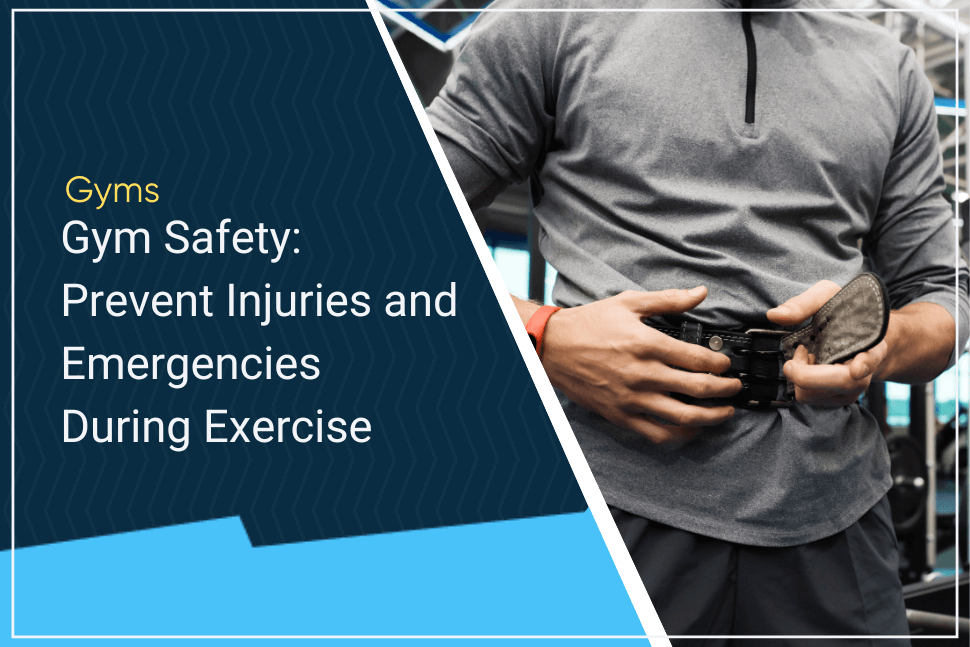If you’re thinking about a career as a Pilates instructor, it’s crucial to understand the financial ramifications. While dedication and love are the cornerstones of a successful Pilates teaching career, it’s also critical to comprehend the financial rewards of the profession.
Variables like geography, certification level, experience, and business savvy can considerably impact the income of an instructor. In this article, we’ll examine the specifics of how much Pilates instructors can make, the factors that determine their pay, and strategies for maximizing their earnings.
Can You Make a Career Out of Pilates?
Pilates, formerly viewed as a specialized kind of exercise, has grown into a thriving sector, providing exciting job prospects for people with a love of exercise and a preference for holistic well-being.
A growing understanding of the value of physical health, well-being, and the pursuit of a balanced lifestyle is fueling the expansion of the modern fitness sector. This spike in interest has generated increased demand for a variety of exercise methods, including Pilates. Pilates has become a mainstay of peoples’ routines as they search for all-encompassing fitness and well-being methods. As a result, this expanding business offers excellent opportunities for budding Pilates instructors to advance their careers.
Pilates provides a break in the fast-paced world we live in today, where stress and sedentary habits are commonplace. Its focus on deliberate movement, core strength, and flexibility is perfectly in line with the modern exercise approach of gaining long-lasting, sustainable health benefits.
Pilates is not just a fad; it has evolved into a crucial part of many fitness regimens, drawing individuals who appreciate the integration of physical and mental wellness. As a result, Pilates instructors are well-positioned for long-term career success.
A Pilates career offers far more than financial gain. The gratification of seeing customers’ physical fitness and emotional health improvements gives the job a profoundly satisfying aspect. In addition, the versatility of working in different environments, such as studios or rehabilitation centers, enables instructors to customize their careers to fit their tastes and ambitions.
How Long Does it Take To Qualify as a Pilates Instructor?
There are a number of factors that affect how long it can take to become a certified Pilates instructor. These include the type of certification you choose to study, the length of the course, and your personal commitment to study.
Mat Pilates Certification: Getting certified in Mat Pilates is a common way to start a career as a Pilates instructor. It emphasizes teaching mat-based Pilates movements and frequently acts as the starting point for more advanced certifications. Programs for mat Pilates certification often take less time than more extensive ones.
Comprehensive Pilates Certification: Comprehensive Pilates certification covers a wider range of Pilates exercises, including those done on specialized apparatus like the Cadillac, Reformer, and Chair. With this extensive training, instructors can gain a deeper understanding of Pilates concepts and become ready to work with more people and in more different environments. Due to the wide curriculum, it typically takes a bigger time commitment.
Training Program Time Frame: A program to become a Pilates instructor might last anywhere from one to many years. A few weeks to a few months may be required for shorter programs, such as mat Pilates certificates. Comprehensive programs, which cover more ground and offer more practical training, may last from several months to a year or longer. The length of the program varies depending on the certification provider’s institution or company and the level of training required.
Elements That Affect How Long It Takes to Qualify: The length of time it takes to become a certified Pilates instructor might vary depending on a number of factors:
- Training Intensity: You can finish a training program more quickly if it is more intense. Full-time immersion programs often last less than part-time or weekend programs.
- Prerequisites: Your training schedule may be impacted by your existing knowledge, experience, and expertize in Pilates or related disciplines like dance or fitness. With a Pilates background, some people can move more quickly through certification programs.
- Program Requirements: There are various certification programs, each with a different number of hours needed to complete them. Some programs have prerequisite apprenticeships and practice hours, which can increase the time needed to finish them.
- Personal Commitment: Depending on how committed you are to regular study and practice, you may advance more quickly or more slowly. A person tends to advance more quickly if they fully commit to learning Pilates and its concepts. Many aspirant Pilates instructors balance their certification process with other obligations like full-time work, caring for their families, or continuing their education. Effective time management and a flexible training philosophy are necessary to balance these obligations. Some training programs provide part-time or weekend choices to assist people with hectic schedules.
Pilates Instructor Certification Levels
Levels of Pilates instructor certification reflect instructors’ development and level of experience. Here’s an overview of the certification levels that are available:
Certification Levels Overview
- Beginner Certifications: Pilates instructors can obtain this certification at the beginner level. It includes the main concepts of Pilates as well as the fundamental movements, breathing methods, and core engagement. The foundational mat Pilates sessions can be taught by novice instructors, and they may support more experienced instructors in studio settings.
- Intermediate Certification: The core information gained via beginning certification is expanded upon by intermediate certification. The exercises and variations taught to instructors at this level include those done on specialized Pilates apparatus including the Reformer, Cadillac, and Chair. They are qualified to work with clients of all fitness levels and to instruct a larger range of classes.
- Advanced Certification: The highest level of proficiency in Pilates training is represented by advanced certification. At this level, instructors are proficient in the entire repertoire of Pilates exercises and can design programs specifically for clients with unique needs and objectives. Athletes, advanced customers, and others needing specific considerations due to injuries or rehabilitation requirements can all work with them.
How Earning Potential Is Affected by Certification Levels
A Pilates instructor’s earning potential might be considerably impacted by their degree of certification:
- Client Attraction: Instructors with higher levels of certification frequently draw in a wider range of students, including those looking for advanced or specialized instruction. This may result in increased income prospects due to their ability to charge more for their expertize.
- Classes with a Wider Range: Instructors with higher certification levels are able to lead classes with a wider range of topics, such as prenatal or post-rehabilitation Pilates. These specialized classes may have higher tuition costs.
- Opportunities in the Studio: To teach classes and offer specialized training, studios frequently look for instructors with advanced certificates. This might lead to better pay or more varied career options.
- Private Instruction: Advanced-level instructors are more likely to offer and demand higher prices for private or one-on-one instruction, which can dramatically boost their overall revenue.
The Value of Lifelong Learning in Pilates Instruction
At all levels, continuing education is essential for Pilates instructors. Pilates is a field that is always changing due to new breakthroughs in exercise science. Here’s why ongoing education is important:
- Skill Development: By participating in continuing education, instructors can hone their abilities, stay current on new approaches, and enhance their teaching strategies.
- Safety & Injury Prevention: New findings from study and expertize can help instructors better protect their students’ safety and reduce the possibility of injuries occurring during workouts.
- Specialization: Through additional training and qualifications, Pilates teachers can focus on things like rehabilitation, sports-specific training, or working with particular groups.
- Career Advancement: Staying up to date with market trends and innovations can lead to more advanced employment options and higher earning potential.
Factors Influencing Pilates Instructor Income
A Pilates instructor’s pay can vary greatly based on a number of variables. Here’s a breakdown:
Urban vs. Rural Locations: A Pilates instructor’s salary is significantly impacted by where they choose to work. Instructors in urban or metropolitan locations frequently charge higher salaries due to a larger demand for their services and a higher cost of living, Rural residents, on the other hand, can have lesser demand and, as a result, lower income.
Skill and Knowledge: Level of experience and expertise are important factors in determining a Pilates instructor’s salary.
Years of Experience: Instructors who have a greater depth of industry knowledge frequently expect higher fees. Customers could be willing to pay more for the wisdom and proficiency that come with experience.
Expertize in a Particular Field: Instructors who have advanced degrees in disciplines like sports-specific training, physical therapy, or working with particular populations (such as pregnant or postnatal clients), may be able to charge extra for their specialized services.
Studio or Gym Type: A Pilates instructor’s income may vary depending on the environment in which they work: Those who have their own independent studios have more control over their fees and earnings.
Instructors working for fitness centers or gyms may be paid hourly or a set salary. These jobs might be stable; however, they might have lower earning potential than freelance work.
Clientele and Retention of Clients: A Pilates instructor’s revenue may be impacted by the kind and amount of their clientele. Working with specialized demographics or high-income clients may result in increased fees. Instructors who draw a devoted and wealthy clientele can earn more money.
Long-term client retention and the development of solid client relationships can help provide consistent and stable revenue. Returning customers are more likely to refer the instructor to others, which promotes business expansion.
Extra Credentials and Specializations: Pilates instructors who pursue extra qualifications and specializations might increase their income potential. Earning advanced certifications in Pilates, such as Master Instructor certificates, shows a high degree of skill and may open doors to higher-paying professions. Obtaining certificates in specialized fields like working with elders, pre and postnatal Pilates, or injury rehabilitation can open up niche markets and enable teachers to charge more for specialized services.
Average Pilates Instructor Salaries
Pilates instructors’ earning potential can vary greatly depending on the area or city where they teach. Instructors in significant urban areas frequently command higher prices due to higher demand, more expensive housing, and a more health-conscious population.
The job status of Pilates teachers may have an impact on their income. Pilates instructors who work full-time may have a more steady income, benefits, and career progression opportunities. Client retention and a regular routine can also be advantageous to them. Part-time instructors could have greater freedom, but they might experience salary swings. If they work fewer hours, they might be able to supplement their income with other work or have a smaller clientele.
Pay Scale for Instructors with Various Certification Levels
The earning potential of Pilates instructors can be influenced by certification levels. An instructor with a beginner-level certification just starting out in the industry may earn between $20,000 and $35,000 annually.
Instructors with intermediate-level certification can expect an annual salary of between $30,000 and $55,000. Pilates teachers with advanced certificates frequently earn the greatest incomes. Their knowledge enables them to deal with specialized populations and provide high-end services, resulting in incomes exceeding $60,000 annually.
It’s important to remember that these compensation figures are only an estimate and may differ greatly depending on a person’s unique situation, including location, studio style, and the instructor’s capacity to draw in and keep students. When estimating their earning potential, potential Pilates teachers should look into the state of the local market and take experience, specialization, and client retention into account.
Median Pilates Instructor Income
According to data collected by GlassDoor.com, the median income for a Pilates instructor, as of September 2023, is $73,860. This comprises a base salary of $59,207 and additional payments of $14, 653, made up of tips, commission, cash bonuses, and profit sharing.
Self-employed Pilates instructors are the highest paid in the industry, with an average of $82,050 per year. The highest-paying private employer in the United States is Equinox Gym ($74,570 per year), followed by New York Pilates ($71,839).
Here is a list of the hourly rates paid to Pilates instructors by five leading Pilates providers;
- Venture Fit: $34 per hour
- LA Fitness: $30 per hour
- YMCA: $25 per hour
- YogaWorks: $33 per hour
- East River Pilates: $30 per hour
Tips for Maximizing Your Pilates Instructor Income
There are a number of strategies Pilates instructors can use to increase their revenue and advance their careers. Here are our top four tips to maximize your earnings:
Develop a Robust Clientele
- Offer Exceptional Service: The secret to developing a solid and devoted clientele is to give your students excellent teaching and individualized care. Deliver results while concentrating on their needs and objectives.
- Effective Communication: You can establish lasting relationships with your clients through honest and efficient communication. Pay attention to their suggestions and modify your teaching approach as necessary.
- Retention of Clients: Promote client retention by providing bundle discounts, loyalty plans, or referral bonuses. Happy clients are more likely to stick with you for their Pilates sessions.
- Regular Assessments: Track your clients’ progress and establish new objectives with regular assessments. This keeps kids interested and demonstrates your dedication to their development.
Self-Promotion and Marketing
- Online Presence: Establish a reputable website or social media presence to highlight your knowledge, offerings, and customer endorsements. Update your internet presence frequently with pertinent content.
- Attend Events: Attend conferences, workshops, and events in your business to network with other professionals and possible customers. Developing connections might result in collaborations and recommendations.
- Client Recommendations: Encourage your clients to suggest your Pilates sessions to their friends and family. Word-of-mouth advertising has a lot of potential.
- Online Advertising: If you want to reach a larger audience, think about implementing focused online advertising campaigns. Social media marketing and platforms like Google Ads can be inexpensive ways to draw in new customers.
Expanding Your Services and Skill Set
Specialization: Consider specializing in one field, such as Pilates for pregnant or postpartum women, rehabilitation, or sports-specific training. Specializations might help you stand out and draw clients who are looking for particular expertise.
Additional Certifications: Pursue higher certifications or specialized training programs to broaden your skill set. This enables you to provide a wider range of services and charge more for sessions that are more specialized.
Group Classes: Provide a range of group exercise options to accommodate students with varying levels of fitness and interests. This broadens the scope of your product offers and draws in new customers.
Bargaining for Pay and Benefits
Realize Your Worth: Ensure you are being paid properly for your qualifications, experience, research industry standards, and local market rates.
Contract parameters like pay rates, class sizes, and scheduling flexibility should be negotiated when working for studios or gyms. Promote just compensation and any supplementary benefits.
Benefits Package: If you work for a studio or fitness facility, think about negotiating for perks like health insurance, retirement plans, and paid time off. These advantages could improve your total pay package.
Independent Pricing: If you run an independent business, you should frequently assess and modify your pricing to take into account both your area of expertise and market demand. Do not undersell your abilities.
Challenges and Considerations
Pursuing a career as a Pilates instructor can be extremely rewarding. However, it has its challenges. Here are five areas that you should be aware of, along with tips to overcome them:
Challenge #1: Industry Competitiveness
Pilates training may be very competitive in the fitness business, especially in densely populated areas. It may be difficult to distinguish out and attract students when so many instructors are competing for the same market share.
How to Face the Challenge:
- Differentiation: Pay attention to what makes you stand out from the competition, such as your teaching style, areas of expertise, or special offerings. Building a solid professional network will help you get recommendations and collaborate with others in your sector.
- Marketing: Invest in efficient marketing techniques to reach and entice prospective customers.
Challenge #2: Self-Employment Taxes
Since many Pilates instructors operate their own studios or work as independent contractors, they must manage their finances and self-employment taxes.
How to Face the Challenge:
- Financial Planning: Talk to a financial counselor to clarify your tax responsibilities and create a plan for efficiently handling taxes.
- Record-keeping: To make tax preparation easier, keep thorough financial records, including income and expenses.
- Deductible Expenses: Become familiar with the tax deductions available to self-employed people in the fitness sector.
Challenge #3: Preserving a Healthy Work-Life Balance
It might be difficult to maintain a healthy work-life balance while you’re teaching Pilates classes, especially if you put in a lot of overtime.
How to Face the Challenge:
- Schedule Your Time: Establish a well-structured schedule for specific work, self-care, and leisure.
- Delegate: To reduce workload stress, hire support personnel or delegate administrative responsibilities.
- Establish Clear Boundaries: To safeguard your time, set boundaries with clients and employers.
Challenge #4: Keeping Current with Industry Trends
The fitness sector faces a challenge because it is always changing in terms of trends, methods, and tools. Maintaining the caliber of instruction requires staying current with these changes.
How to Face the Challenge:
- Continuing Education: Investing in continued education and certifications will help you keep your skills and knowledge current.
- Professional development: Attend workshops, conferences, and business gatherings to stay up to date on the newest trends.
- Networking: Make contact with other industry experts to exchange knowledge and keep up with the latest guidelines.
Conclusion
Pursuing a career as a Pilates instructor offers personal and financial rewards. Along with the satisfaction that comes from guiding others to greater physical and emotional health, it provides the opportunity to develop a good level of income. Pilates instructors making the highest incomes are those who create their own businesses, with the average being $82,050 per year. The across-the-board average is $73,860, comprising a base salary of $59,207 and an extra $14,653 coming from tips, cash advances, and bonuses.
 39 Martial Arts Statistics To Know in 2022
39 Martial Arts Statistics To Know in 2022



